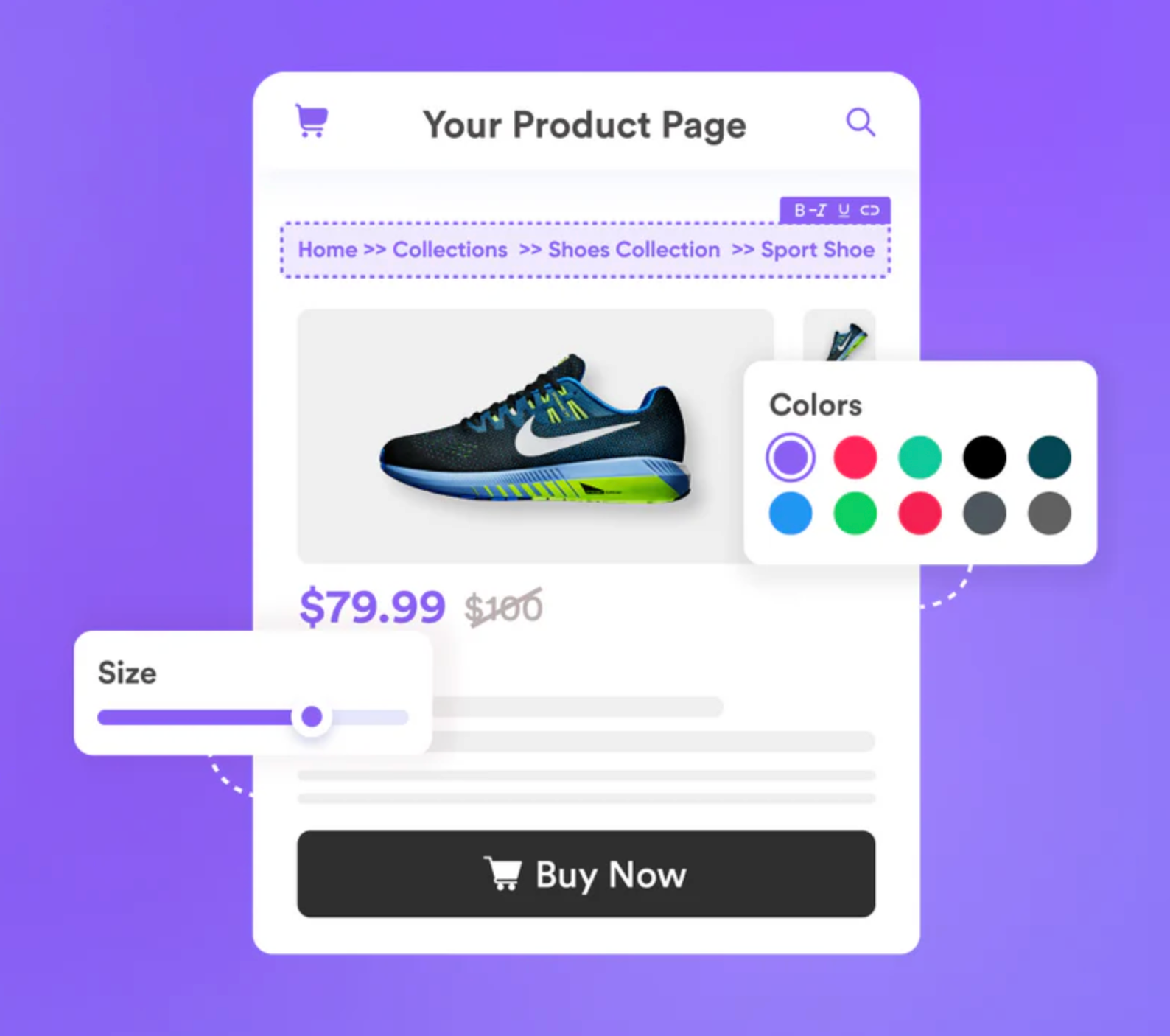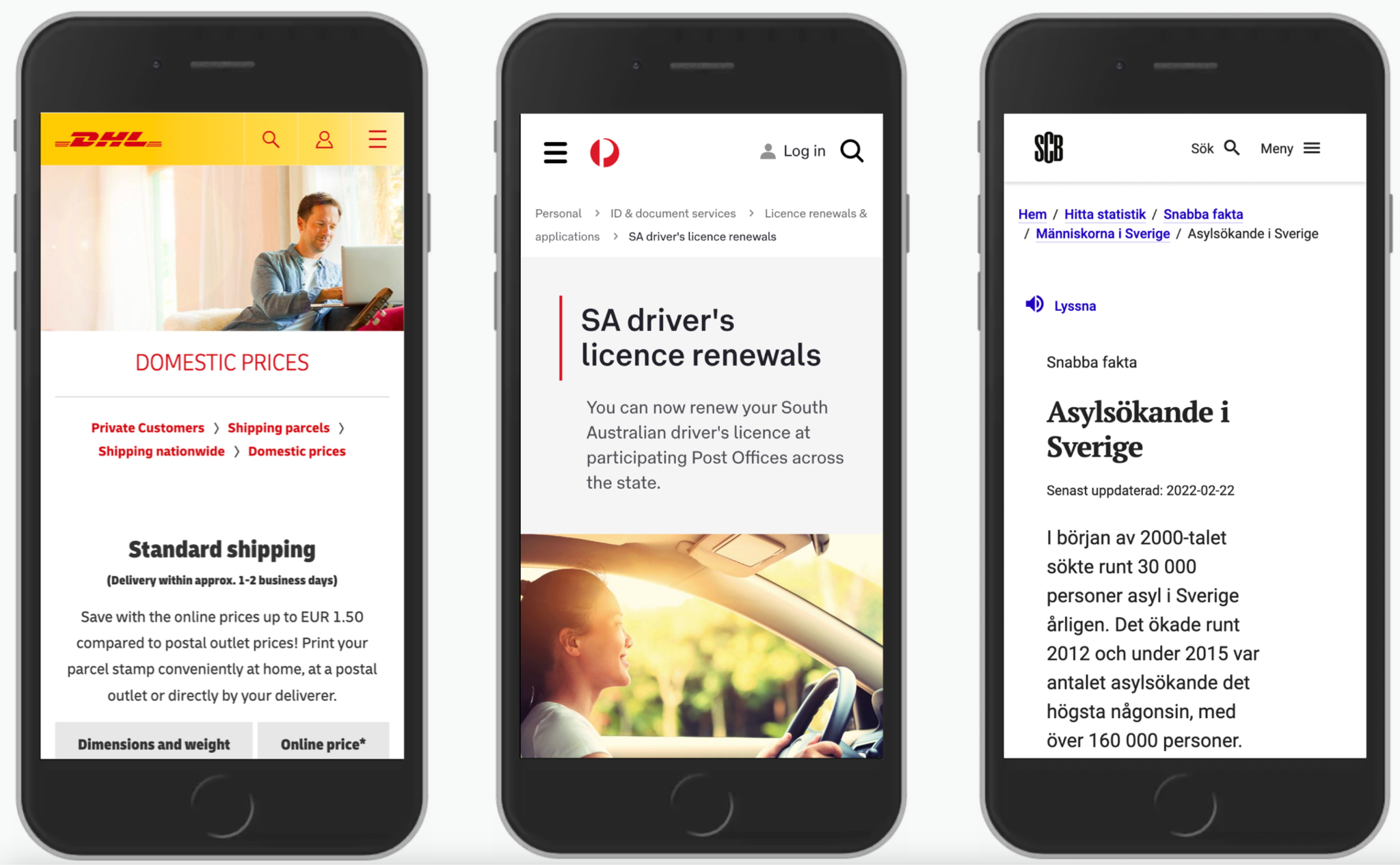
Website navigation is one of the most important aspects of user experience and search engine optimization (SEO). Visitors need to find their way around your site quickly and intuitively, while search engines must understand how your pages relate to each other. This is where breadcrumb navigation comes in.
Breadcrumbs act as a secondary navigation system, showing users their exact location within a site’s hierarchy. More than just a design element, breadcrumbs play a key role in improving usability, reducing bounce rates, and boosting organic visibility. In this article, we’ll explore what breadcrumbs are, why they matter, and how they benefit both user experience (UX) and SEO.

Breadcrumbs are a navigational aid that displays a trail of links, usually at the top of a webpage, showing the user’s path from the homepage to the current page. They’re often styled as simple text links separated by symbols like >, /, or →.
For example: Home > Electronics > Mobile Phones > Samsung Galaxy S24
This trail tells the user exactly where they are on the site and provides quick shortcuts to previous categories. Breadcrumbs are especially common on eCommerce websites and large content-heavy sites with multiple categories and subcategories.
User experience (UX) is about guiding visitors through your site in the smoothest, most intuitive way possible. When people can find what they’re looking for without friction, they’re more likely to stay longer, engage more, and eventually convert. Breadcrumb navigation supports these goals by acting like a roadmap for your website. Here’s how breadcrumbs enhance the user journey in practical ways:
When a visitor lands on a product page or blog article directly from Google, an ad, or social media, they often don’t know where that page fits into your site’s overall structure. Breadcrumbs instantly provide context by showing the exact path leading to that page.
For example, if someone clicks on a blog post titled “10 Best Protein Smoothies”, a breadcrumb trail like Home > Nutrition > Smoothies > Protein Smoothies immediately tells them that this article belongs to a broader content cluster about nutrition. This orientation reduces confusion and reassures users that they are in the right place.
Without breadcrumbs, a visitor who wants to explore related content might have to use the back button several times, re-enter search queries, or navigate through menus from scratch. This can feel tedious and cause users to abandon the site altogether. Breadcrumbs reduce these pain points by providing shortcuts at every step.
For instance, instead of repeatedly clicking “back,” a user on a “Running Shoes” product page can click on Men’s Shoes in the breadcrumb trail and instantly see all footwear options. By minimizing frustration, you create a smoother browsing experience that builds trust and keeps users engaged.
Breadcrumbs double as internal links, making it easy for users to climb back up to parent categories and explore other products, services, or articles. This exploratory behavior benefits both the user and the business.
Take the example of an online recipe site: someone reading “Vegan Pasta Recipes” may decide to click back to the broader category “Vegan Recipes” to discover more meal ideas. This type of navigation boosts time spent on your site and increases the likelihood of repeat visits. Essentially, breadcrumbs transform what could have been a single-page session into a multi-page journey.
Large websites, particularly eCommerce stores with thousands of products, can be overwhelming. Shoppers may not always know the exact terms to type into the search bar, and menus can feel bulky on certain devices. Breadcrumbs simplify this problem by creating quick, visible shortcuts.
Imagine a customer browsing for laptops. From a product page, they might realize they want to compare other models. Instead of starting over in the menu, they can click on Laptops > Gaming Laptops within the breadcrumb trail and instantly explore relevant options. This time-saving convenience makes the site feel more user-friendly, encouraging longer visits and higher conversions.

Mobile browsing now dominates online traffic, but navigating complex menus on a small screen can be frustrating. Drop-down menus are sometimes hard to tap, and scrolling through layers of categories takes too much time. Breadcrumbs solve this by offering clean, tap-friendly navigation that requires fewer interactions.
For example, a breadcrumb trail like Home > Clothing > Men > Jackets > Leather Jackets fits neatly on a mobile screen and allows a shopper to jump directly back to “Men’s Clothing” or “Jackets” without scrolling endlessly. This kind of streamlined navigation is particularly important on mobile devices, where speed and convenience directly influence whether users stay or leave.
Breadcrumb navigation isn’t only about usability; it’s also a powerful tool for improving search engine visibility. Google and other search engines pay close attention to how websites are structured, how pages are interlinked, and how users interact with content. Breadcrumbs naturally strengthen all of these areas, making them a valuable element in SEO checklist.
Search engine crawlers rely on internal linking and hierarchy to understand how your site is organized. Breadcrumbs act like signposts that define relationships between pages, helping crawlers recognize parent-child connections.
For instance, a product page labeled under Home > Electronics > Smartphones > Samsung Galaxy makes it clear that “Samsung Galaxy” belongs to the broader “Smartphones” category. This structured navigation ensures that even deep-level pages are indexed properly, improving your site’s crawlability and visibility.
Every breadcrumb link points back to higher-level category pages, which strengthens your internal linking strategy. This has two advantages:
For example, an eCommerce site selling “Bluetooth Headphones” may benefit when its “Headphones” category page gains authority through breadcrumb links, improving its chances of ranking for broader terms like “best headphones.”

Google frequently replaces long, messy URLs with breadcrumb trails in search results. This not only makes your listings look cleaner but also communicates structure and relevance to potential visitors.
For instance, instead of seeing:
www.example.com/store/products/electronics/audio/bluetooth-headphones-2025-model
Users see: Home > Electronics > Audio > Bluetooth Headphones
This presentation is easier to read, inspires confidence, and increases click-through rates (CTR) since users feel they’re clicking into an organized, trustworthy site.
A high bounce rate signals to search engines that users may not be finding what they need on your site. Breadcrumbs help combat this problem by giving users instant alternatives.
Imagine a shopper who lands on a specific product that’s out of stock or not suitable. Without breadcrumbs, they might leave the site immediately. With breadcrumbs, they can jump back to a category like Running Shoes and explore other options. This keeps them engaged longer, signaling to Google that your site satisfies search intent.
Breadcrumbs often contain descriptive category labels with relevant keywords. This repetition, spread naturally across your site, reinforces topical authority without forcing keyword stuffing into content.
Let’s take an example. A breadcrumb like Home > Furniture > Office Furniture > Ergonomic Chairs naturally emphasizes “Office Furniture” and “Ergonomic Chairs,” helping search engines understand what your site specializes in. Over time, this consistent keyword reinforcement can boost rankings for both broad and long-tail terms.
Breadcrumb navigation may seem like a small detail, but it has a big impact on both user experience and SEO. By improving orientation, reducing bounce rates, and enhancing site structure, breadcrumbs serve as a bridge between usability and search engine visibility.
Whether you run a blog, a corporate site, or an eCommerce store, adding breadcrumb navigation is a smart move. It improves the customer journey, boosts engagement, and sends positive signals to Google, all of which can contribute to higher rankings and more conversions.
In short, breadcrumbs are a simple yet powerful tool every website should use.